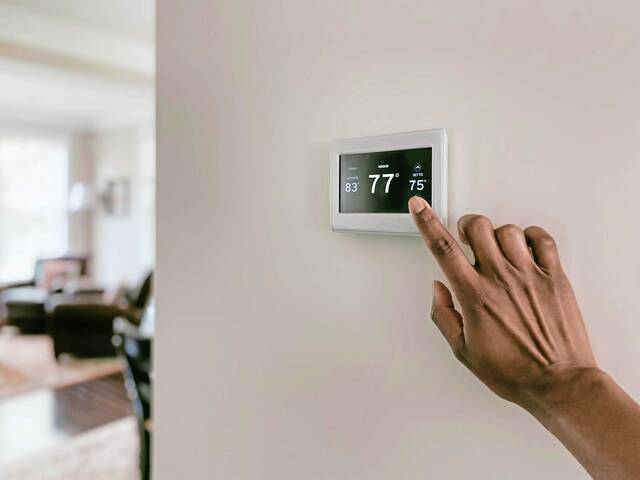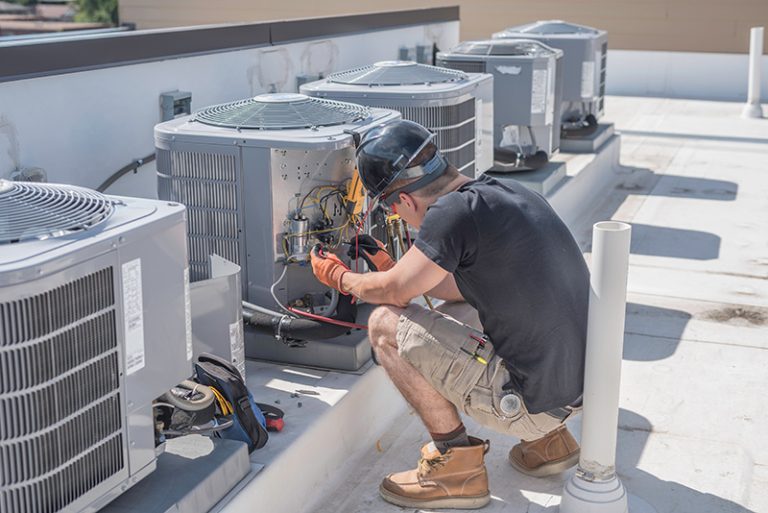
The thermostat is often considered the brain of your HVAC (Heating, Ventilation, and Air Conditioning) system. It’s the control center that regulates the temperature of your home or building, making sure you stay comfortable no matter the season. However, not all thermostats are created equal, and some HVAC systems may be missing essential features that could significantly enhance both comfort and efficiency. If you’re looking to maximize your HVAC system’s performance, it’s important to know which thermostat features are critical and how they can improve your experience.
In this article, we’ll explore the must-have thermostat essentials that could be missing from your HVAC system and explain why they are so important. From energy savings to improved comfort and convenience, upgrading or optimizing your thermostat can make a world of difference in your home or business.
1. Smart Thermostat Features: Energy Efficiency at Its Best
One of the most significant advancements in thermostat technology over the past decade has been the rise of smart thermostats. These devices go beyond basic temperature control, offering sophisticated features that allow you to adjust settings remotely, set schedules, and even learn your habits over time.
Why It’s Essential:
A smart thermostat can help save energy by ensuring that your HVAC system is running only when it’s needed. Many of these devices have motion sensors that detect whether you’re home or away, automatically adjusting the temperature to optimize energy usage. For example, if you’re not home, the thermostat can adjust to an energy-saving setting, and when you return, it can preemptively adjust the temperature so that you step into a comfortable space. This smart adjustment prevents your HVAC system from working harder than necessary, which lowers your energy consumption and ultimately cuts down on your energy bills.
Popular models, such as the Nest Thermostat and Ecobee, are compatible with smart home systems like Amazon Alexa, Google Assistant, and Apple HomeKit, allowing you to control your HVAC settings via voice commands or smartphone apps.
2. Programmability: Set It and Forget It
While smart thermostats have gained popularity, some homes and businesses may still use programmable thermostats. These thermostats allow you to set specific temperature schedules for different times of the day or week. For example, you might want the temperature to be lower while everyone is asleep or away during the workday and raise it just before you return home.
Why It’s Essential:
The benefit of having a programmable thermostat is that it reduces the need for manual adjustments, which can be both inconvenient and wasteful. Instead of running your HVAC system constantly, you can schedule it to run only when needed, ensuring your system isn’t working overtime when no one is around to enjoy it. This can lead to significant savings in heating and cooling costs over the course of a year.
A good programmable thermostat should offer flexibility, allowing you to set different temperatures for weekdays and weekends, as well as various time intervals throughout the day. Many models even allow you to adjust the schedule based on the seasons, ensuring maximum efficiency year-round.
3. Wi-Fi Connectivity: Control From Anywhere
Wi-Fi-enabled thermostats are another important essential that more homeowners and businesses are adopting. With Wi-Fi connectivity, your thermostat can be controlled from anywhere in the world using your smartphone, tablet, or computer. Whether you’re at work, on vacation, or simply lounging in another room, you can adjust the temperature of your home with ease.
Why It’s Essential:
Wi-Fi connectivity provides an unparalleled level of control and convenience. Suppose you forgot to turn off your HVAC system before leaving the house. With a Wi-Fi-enabled thermostat, you can simply open an app and adjust the settings remotely, avoiding unnecessary energy consumption. Similarly, if you are coming back from a trip or long day, you can adjust the thermostat so that your home is perfectly comfortable by the time you walk in the door.
Additionally, some Wi-Fi thermostats allow for location-based control, which can automatically adjust the temperature when you’re near your home. This feature integrates seamlessly with your lifestyle, offering both convenience and energy savings.
4. Humidity Control: The Missing Comfort Element
While many people focus on temperature alone, humidity control is equally important for comfort and HVAC efficiency. Some advanced thermostats come with built-in humidity sensors that can regulate the moisture level in your home. These systems can adjust the operation of your HVAC system to maintain a balanced humidity level, improving both comfort and air quality.
Why It’s Essential:
High humidity levels can make your home feel warmer than it actually is, causing your HVAC system to work harder to cool the space. On the flip side, low humidity can lead to dry skin, static electricity, and an uncomfortable living environment. By managing both temperature and humidity, a thermostat with this feature helps create a more comfortable atmosphere and can prevent overworking your HVAC system.
In areas with high humidity, such as basements or coastal regions, a thermostat with humidity control can be particularly beneficial. It ensures that your home remains comfortable, even in extreme weather conditions, and reduces strain on your system.
5. Zoning Capabilities: Targeted Comfort for Different Areas
If you have a large home or multi-story building, a zoning system can be a game-changer. This allows you to control the temperature of different areas (or zones) independently, using multiple thermostats or a single smart thermostat that can manage the entire system.
Why It’s Essential:
A zoning system provides personalized comfort throughout the building, allowing you to adjust the temperature in specific rooms or floors based on occupancy or use. For example, you might want the living room to be warmer in the evening while the bedrooms remain cooler. With zoning, you can ensure that each area of your home or building is heated or cooled exactly to your liking, without wasting energy in unused spaces.
Zoning is especially useful in larger homes with varying heating and cooling needs, or in multi-zone buildings like offices or multi-level apartments. It allows for more precise control, ensuring that no energy is wasted heating or cooling rooms that are not in use.
6. User-Friendly Interface: Easy to Read and Use
It’s easy to overlook the importance of a user-friendly interface, but it can significantly impact your experience with your thermostat. A simple, intuitive interface is key to easily adjusting settings and understanding what’s going on with your HVAC system at a glance. Modern thermostats offer clear displays, touch screens, and easy-to-navigate menus, making them accessible to users of all ages and tech-savviness.
Why It’s Essential:
A thermostat with a user-friendly interface ensures that you can make adjustments quickly and with minimal effort. This is particularly important for individuals who are not comfortable with complex technology or for households with multiple users. A clear, readable screen with large buttons or intuitive touch controls can make it easier to adjust your home’s temperature settings at any time, without frustration.
7. Energy Usage Monitoring: Know Your Consumption
Some advanced thermostats also come with energy monitoring features that track your HVAC system’s energy consumption over time. These devices provide detailed reports on how much energy you’re using, allowing you to track patterns and identify areas where you could save on utility bills.
Why It’s Essential:
By keeping track of your energy usage, you can better understand how your HVAC system is performing and identify opportunities for improvement. For example, if your system is consuming more energy than expected, you can adjust settings, perform maintenance, or consider upgrading components to optimize efficiency. This level of insight is invaluable for long-term cost savings and environmental sustainability.
Conclusion
The thermostat is far more than just a simple control for your HVAC system—it’s a powerful tool that can optimize comfort, energy efficiency, and air quality in your home or building. Whether you choose to upgrade to a smart thermostat, incorporate zoning capabilities, or embrace energy monitoring, each of these thermostat essentials offers tangible benefits for your HVAC system’s performance. By ensuring that your thermostat is equipped with these advanced features, you can enjoy a more comfortable, efficient, and cost-effective living environment. Take the time to assess your thermostat and see if it’s missing any of these essentials—your HVAC system, and your wallet, will thank you.





